To gain a comprehensive understanding of our XRF Spectrometer and its capabilities, please watch the video below. It provides a visual guide to its features, applications, and how it delivers precise, non-destructive elemental analysis for your needs.
Learn how to use an XRF Spectrometer from the video above, covering the entire process from powering on the machine to obtaining results.
VRAY offers advanced XRF Spectrometer solutions, delivering precise, non-destructive elemental analysis for diverse applications. Our range covers Handheld XRF Spectrometers like the ultra-portable VR-H5 (1.6Kg, 0.03% accuracy for 9999 gold, 8hr battery, wide temp range) and the versatile VR-M5 (4.1Kg, 0.05% accuracy, 5MP camera).
Our XRF Spectrometers for Gold (Desktop) include the cost-effective VR-X3 ($6k-$7k, 0.1% accuracy, solids only), the capable VR-X5 ($10k-$11k, 0.05% accuracy, full element range), and the lab-level VR-T7 ($20k-$22k, highest 0.01% accuracy, SDD detector, XY platform, 5MP camera).
All models test solid/liquid/powder (VR-X3 solids only). Core tech features 50W micro-focused X-ray tubes, Si-Pin/SDD detectors, and T-shaped radiators for safe heat dissipation. Built-in computers and touchscreens ensure intuitive operation. VRAY provides an XRF solution for every professional.
An XRF Spectrometer (X-ray Fluorescence Spectrometer) is an analytical instrument used for non-destructive elemental analysis of various materials. Its working principle is based on the interaction between X-rays and the atoms within a sample. The process involves the following steps:
X-ray Excitation: A high-energy primary X-ray beam, generated by an X-ray tube (e.g., 50W micro-focused tungsten or beryllium window), is directed towards the sample.
Photoelectric Effect: When these primary X-rays strike sample atoms, they eject inner-shell electrons, creating unstable vacancies.
Fluorescence Emission: To regain stability, outer-shell electrons fill these vacancies, releasing energy as secondary, characteristic fluorescent X-rays. Each element emits X-rays at unique energy levels, acting as its "fingerprint".
Detection and Measurement: A highly sensitive detector (such as a Si-Pin or SDD detector) captures these fluorescent X-rays, measuring both their distinct energies and intensity.
Data Analysis: An integrated computer system with specialized software processes these signals. By analyzing the unique energy signatures, the software identifies the elements present and quantifies their concentration based on X-ray intensity.
Result Display: The final elemental composition and concentration data are then presented to the user, typically on a screen. This entire process is non-destructive, rapid, and precise.
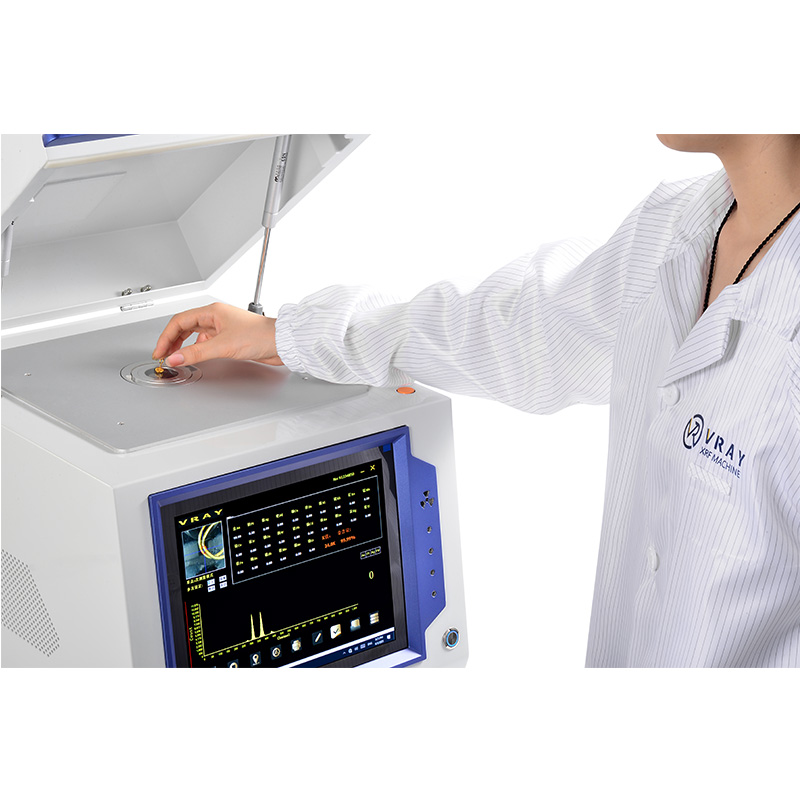
VRAY XRF Spectrometers offer a diverse range of features, each model tailored to specific professional needs in elemental analysis:
Accuracy: Varies by model, from ultra-high 0.01% for 9999 gold (VR-S7, VR-T7), to 0.03% (VR-H5), 0.05% (VR-X5, VR-M5), and 0.1% for 999 gold (VR-X3).
Test Time: Fast analysis, typically 30 to 50 seconds.
Sample Versatility: Most models handle solid, liquid, and powder samples, with VR-X3 focusing on solids.
Detector Technology: Equipped with high-performance detectors including Gas Proportional, Customized Si-Pin (USA-sourced), and high-sensitivity SDD detectors.
X-ray Tube: Features a robust 50W micro-focused X-ray tube (tungsten or beryllium window).
Safety & Heat Management: All units include a dedicated T-shaped radiator for efficient heat dissipation, ensuring stable operation without cooling waits.
User Interface: Intuitive operation via touchscreens (e.g., 11.6", 5.7", 4.3") and integrated built-in industrial computers (e.g., Intel i5, Windows 11).
Portability: Handheld VR-H5 at 1.6Kg with an 8-hour intelligent battery; Portable VR-M5 at 4.1Kg.
Advanced Capabilities: Some models feature built-in cameras (5MP), manual XY platforms, and broad operating temperature ranges (-20℃~50℃ for portable units).
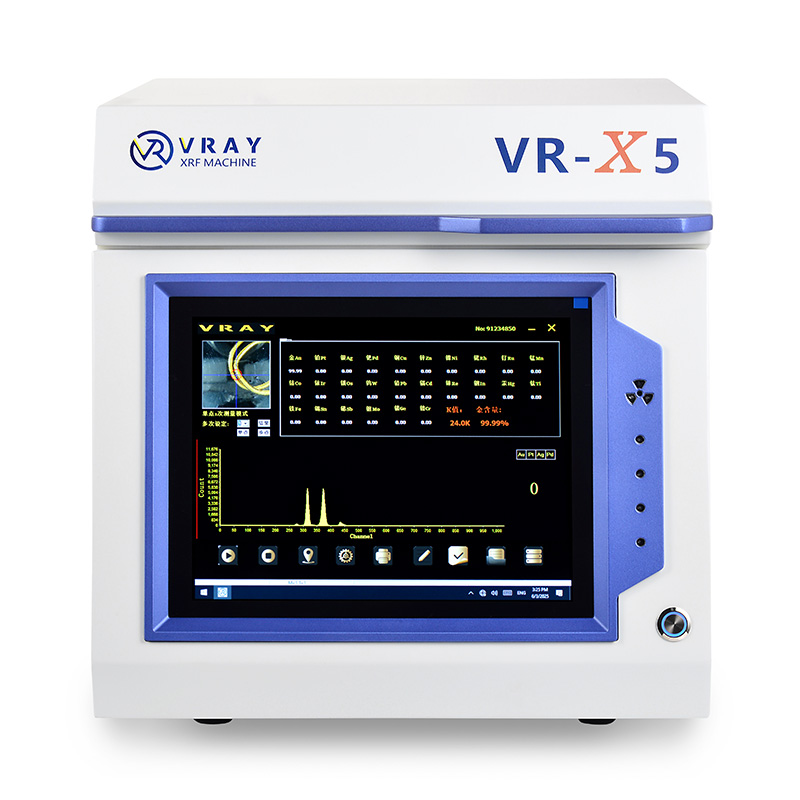
VR-X3: $6,000 - $7,000 USD
VR-X5: $10,000 - $11,000 USD
VR-S6 (similar to VR-X5 specifications in previous data): $12,000 - $14,000 USD
VR-H5 / VR-M5: $15,000 - $18,000 USD
VR-S7 / VR-T7: $20,000 - $22,000 USD
Accuracy & Detector Type: Higher precision (e.g., 0.01% accuracy) and more advanced detectors (e.g., SDD) correlate with higher costs.
Portability & Design: Compact, lightweight, and battery-powered designs (e.g., VR-H5, VR-M5) factor into pricing due to specialized engineering.
Advanced Analytical Features: Inclusion of features like high-resolution cameras, manual XY platforms, or specific X-ray tube types (beryllium window) add to the cost.
Integrated Computing: The power and type of the built-in computer system and included analysis software.
After-Sales Support: Comprehensive services, including installation guidance, training, warranty, and remote/on-site technical support, contribute to the overall value.
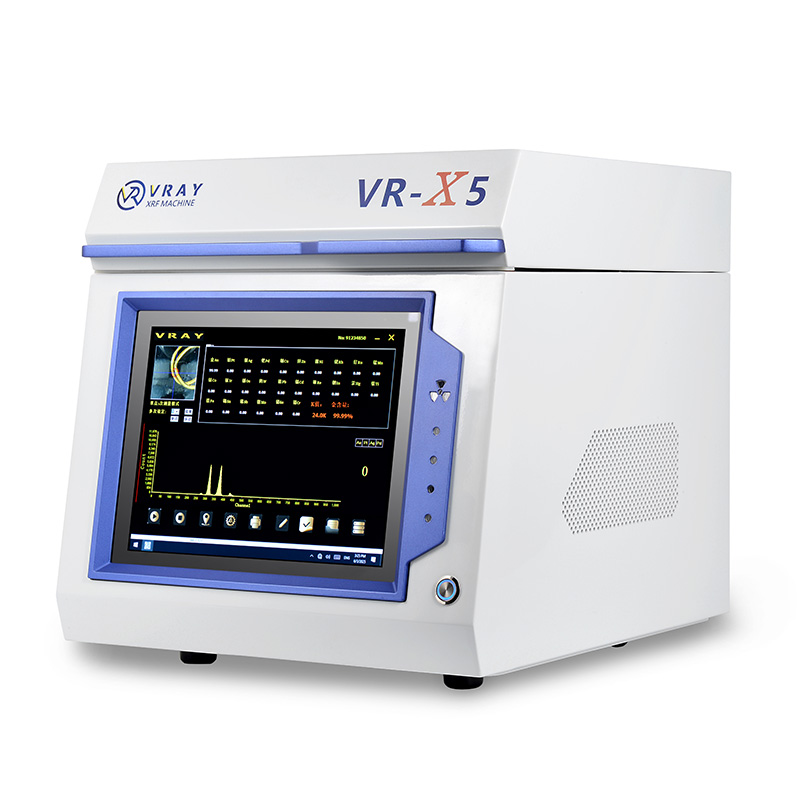
VRAY XRF Spectrometers are indispensable tools across a wide range of professional applications, particularly in the precious metals and broader material analysis industries:
Precious Metal Purity Testing: Accurately determine the exact elemental composition and purity (e.g., gold karat, platinum content) of jewelry, coins, bullion, and other precious metal items.
Jewelry Appraisal & Valuation: Provide precise, non-destructive data crucial for accurate valuation of both new and pre-owned jewelry pieces.
Quality Control & Manufacturing: Essential for manufacturers and refiners to verify material consistency and purity, both for incoming raw materials and during various stages of production.
Fraud Prevention & Authentication: Effectively identify mislabeled items, detect counterfeit materials, or verify authenticity, thereby protecting businesses and consumers from fraud.
Scrap Metal Sorting & Recycling: Rapidly analyze the elemental composition of precious metal scrap, dental alloys, or other waste materials to facilitate efficient sorting, recovery, and recycling processes.
On-site & Field Analysis: Portable and handheld models are ideal for professionals requiring immediate and accurate elemental analysis outside of a traditional laboratory setting, such as at trade shows, pawn shops, or remote sites.
Research & Development: Utilized in various scientific fields for material characterization, elemental mapping, and quantitative analysis in R&D environments.
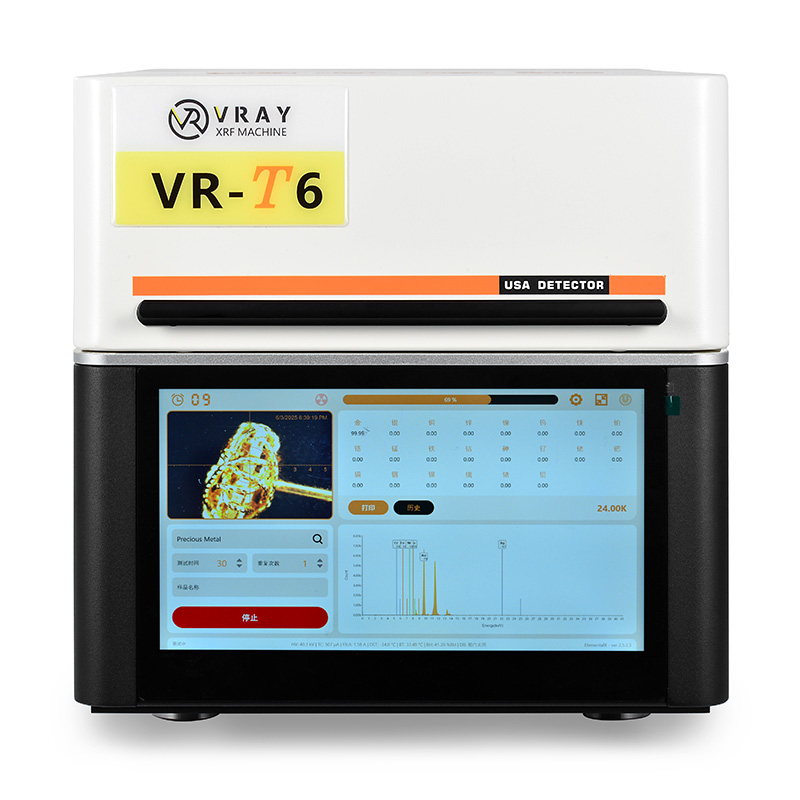
Operating a VRAY XRF Spectrometer is a straightforward process, designed for efficiency and precision:
Power On & Software Launch: Begin by powering on the analyzer and launching its dedicated analysis software.
Preheating & Daily Calibration: Allow the instrument to preheat for approximately 10 minutes. Crucially, perform a daily calibration using the provided calibration sample before the first test of the day.
Sample Placement & Test Initiation: Carefully place the material sample within the designated detection area. Ensure the protective door is securely closed to prevent X-ray exposure, then press the "start" button.
Result Acquisition & Reporting: Preliminary analysis results typically appear within 3 seconds, with complete, accurate data available in 30 to 50 seconds. Results can then be viewed on screen, printed, or saved digitally.
Yes, VRAY XRF Spectrometers are highly accurate. Our models offer accuracy ranging from 0.01% for 9999 gold (VR-S7, VR-T7) to 0.03% (VR-H5) and 0.05% (VR-X5, VR-M5). This precision is ensured through high-quality components (e.g., SDD/Si-Pin detectors, micro-focused X-ray tubes), strict daily calibration, stable operating environments, and adherence to operational protocols.
Our XRF Spectrometers can analyze a broad range of elements. For general precious metal analysis, they detect Au, Ag, Cu, Pt, Pd, Ir, and Cd. More advanced desktop models like the VR-X5 and VR-S7 can test elements across the range from K (Potassium, atomic number 19) to U (Uranium, atomic number 92).
Key precautions include:
Always preheat and calibrate daily before the first use.
Ensure the protective door is securely closed before initiating any test to prevent X-ray leakage.
Use a regulated power supply or UPS to avoid voltage fluctuations.
Maintain a dry, clean, and well-ventilated working environment, avoiding high temperatures or humidity.
Do not modify software parameters privately or touch the detector window with sharp objects/fingers.
Avoid moving the sample or opening the door during a test.
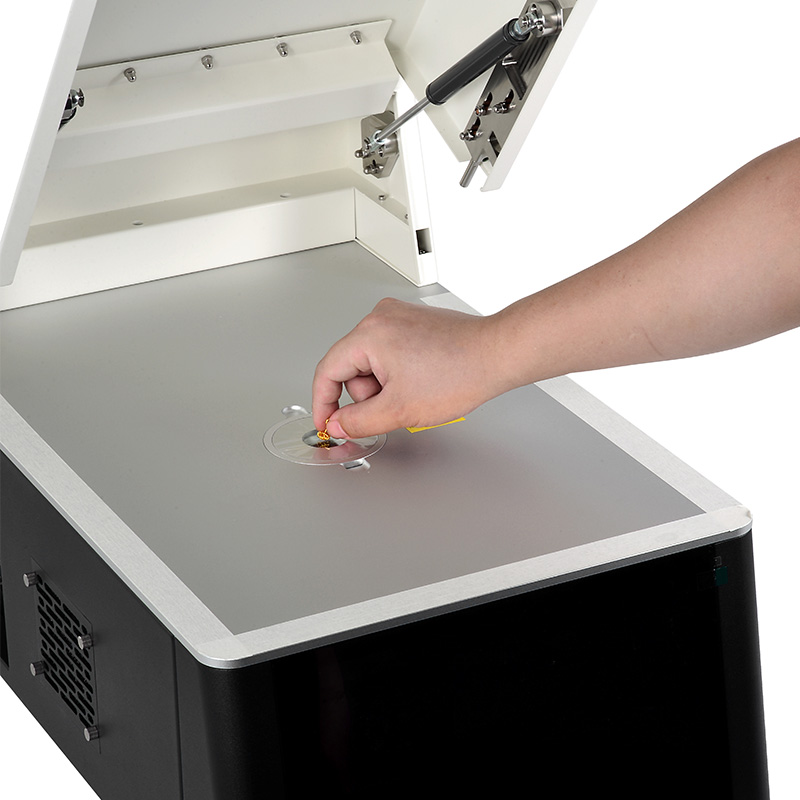
When buying, prioritize these factors:
Accuracy & Performance: Match the instrument's accuracy (e.g., 0.01% vs 0.05%) to your precision requirements.
Test Range & Efficiency: Consider sample types (solid/liquid/powder) and test speed (30-50s).
Durability & Safety: Look for robust build and effective heat management (T-shaped radiator).
Software Functionality & Operation: Assess user-friendliness, data analysis capabilities, and screen features.
Comprehensive After-Sales Support: Ensure availability of installation, training, warranty, and ongoing technical assistance.
Hardware: Includes a 50W micro-focused X-ray tube (tungsten or beryllium window) for excitation, high-performance detectors (Gas Proportional, Si-Pin, or SDD) for capturing X-rays, and collimators (ϕ2.5mm or ϕ1.5mm) for beam focus. Many models feature integrated Intel i5 computers, touchscreens, and efficient T-shaped radiators for cooling. Portable models include intelligent batteries.
Software: Specialized software runs on the integrated computer, processing detector signals to identify elements and quantify concentrations. It manages data, generates reports, and provides an intuitive user interface for operation.
While specific emergency procedures (like fire or immediate hazard response) are in the user manual, the primary approach for malfunctions or critical issues is leveraging VRAY's technical support. Our safety features prevent many hazards (e.g., door interlocks for X-ray exposure). For any malfunction or unresolvable issue, users should immediately contact VRAY's technical support for remote guidance, troubleshooting, or potential on-site engineer dispatch.
VRAY offers comprehensive technical support:
Installation Guidance: Expert assistance for setting up the machine.
Software Updates: Regular updates to enhance functionality and resolve issues.
Technical Training: Detailed guidance on proper operation and maintenance.
Hardware Warranty: Coverage for hardware defects.
Remote Guidance: Engineers provide support for software problems, and for hardware issues via mailed accessories and video tutorials.
On-site Support: For complex hardware problems that cannot be resolved remotely, engineers can be dispatched to the client's location.
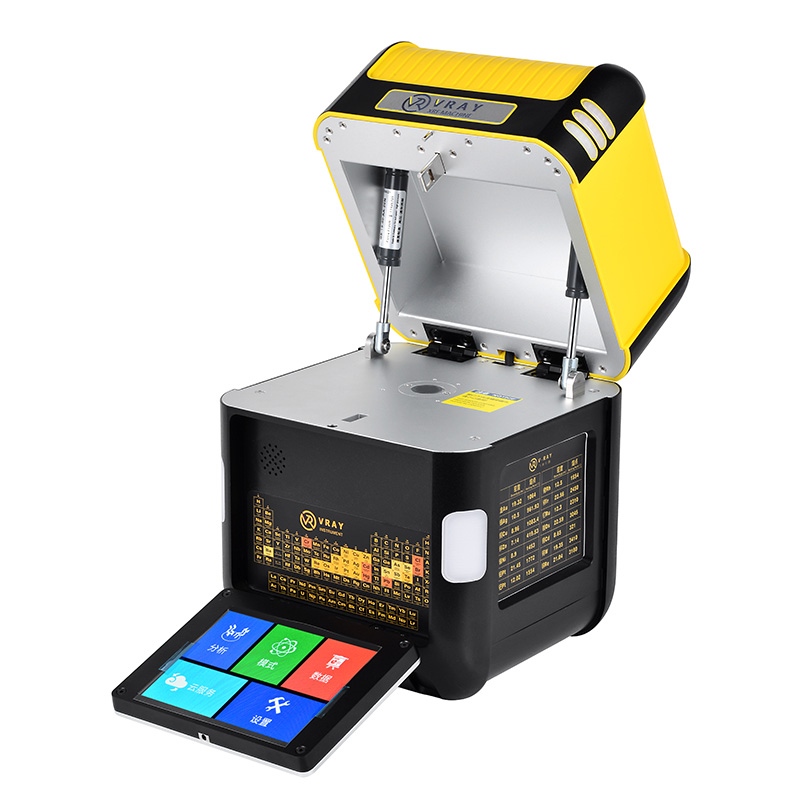
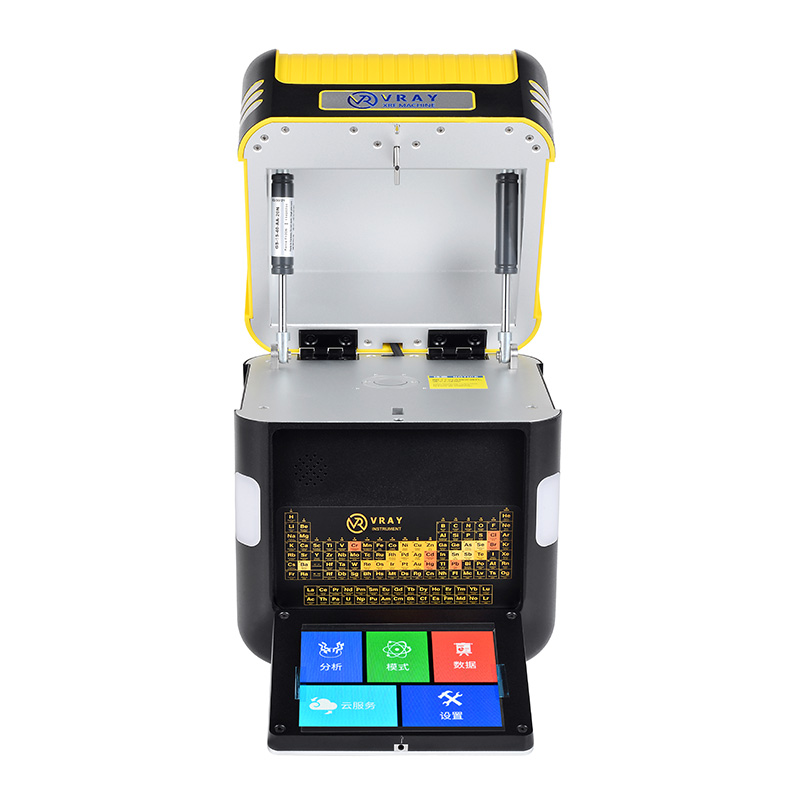
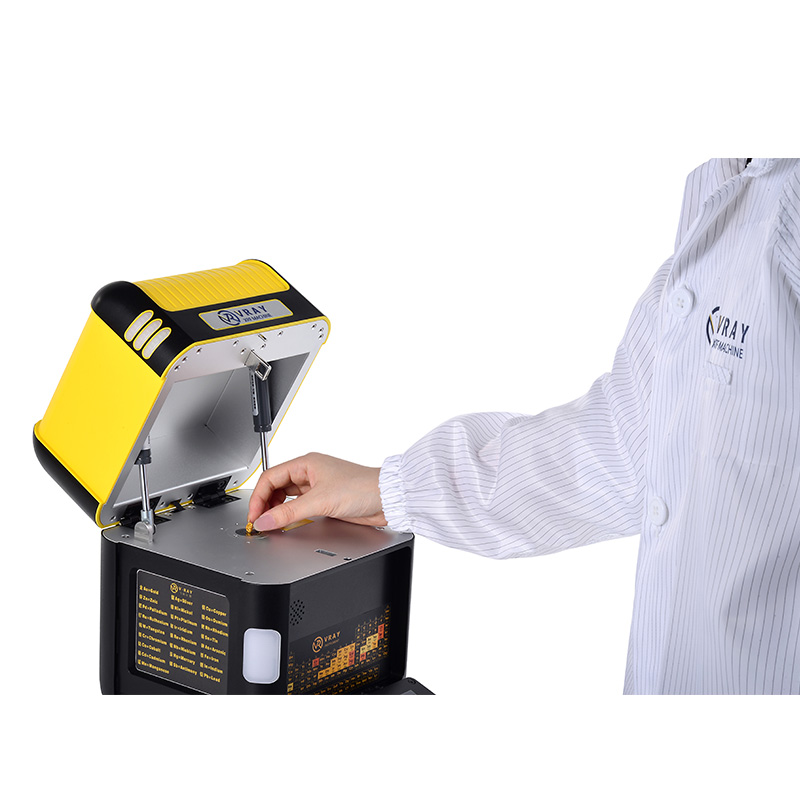
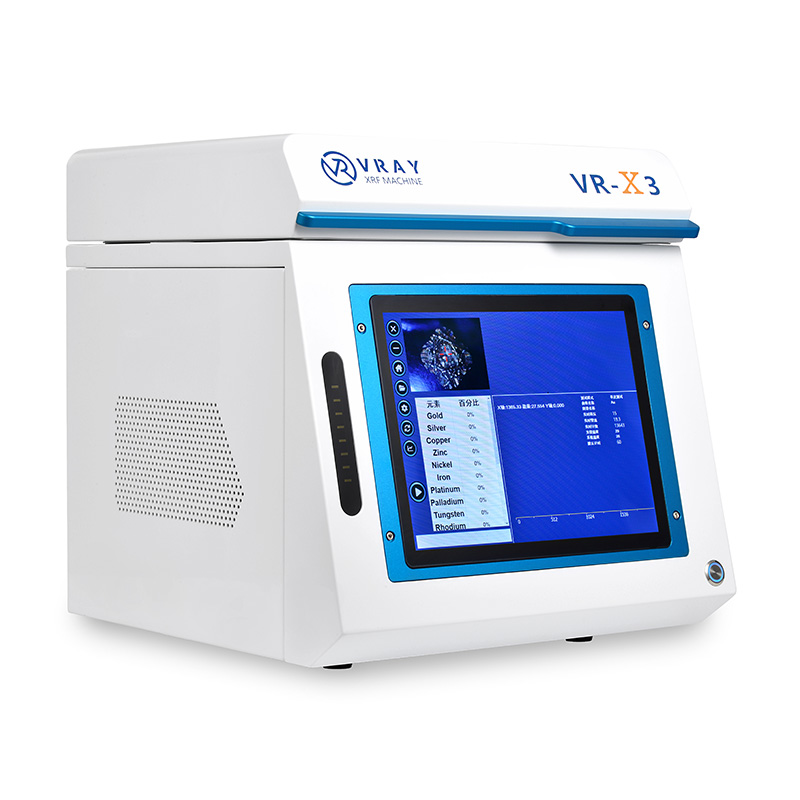
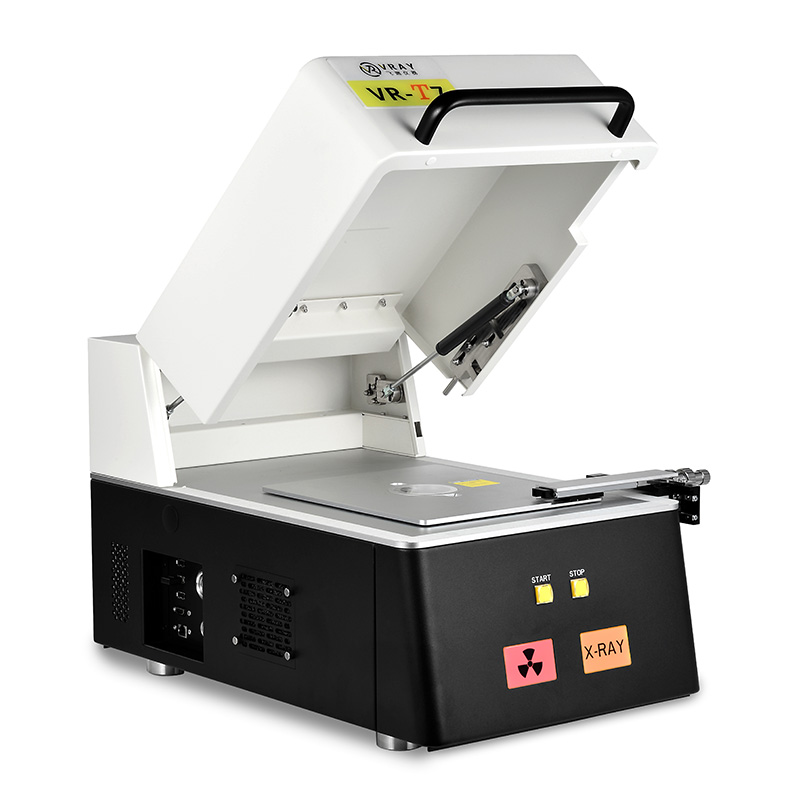
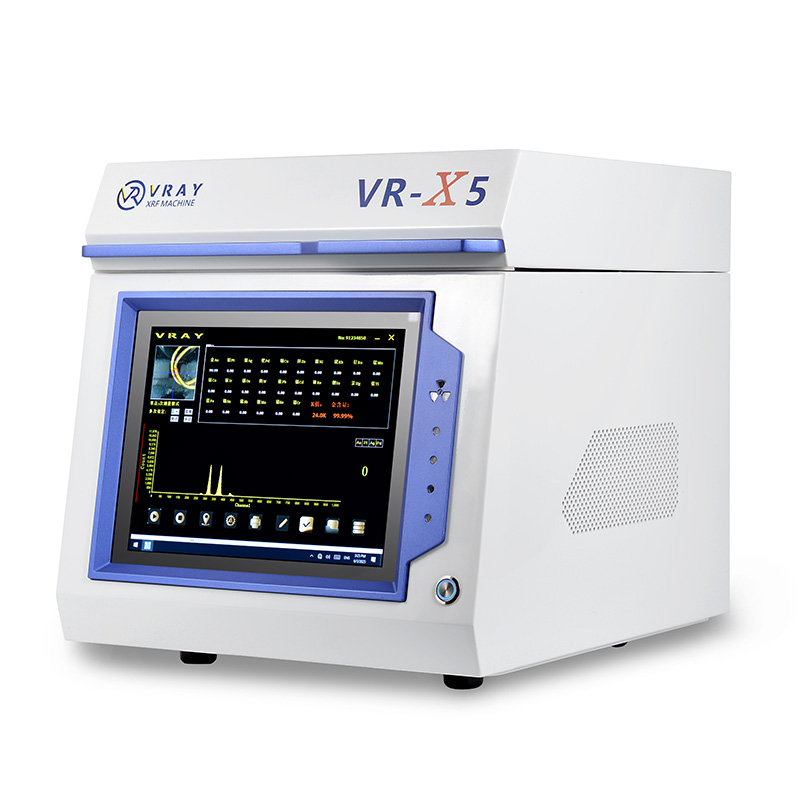
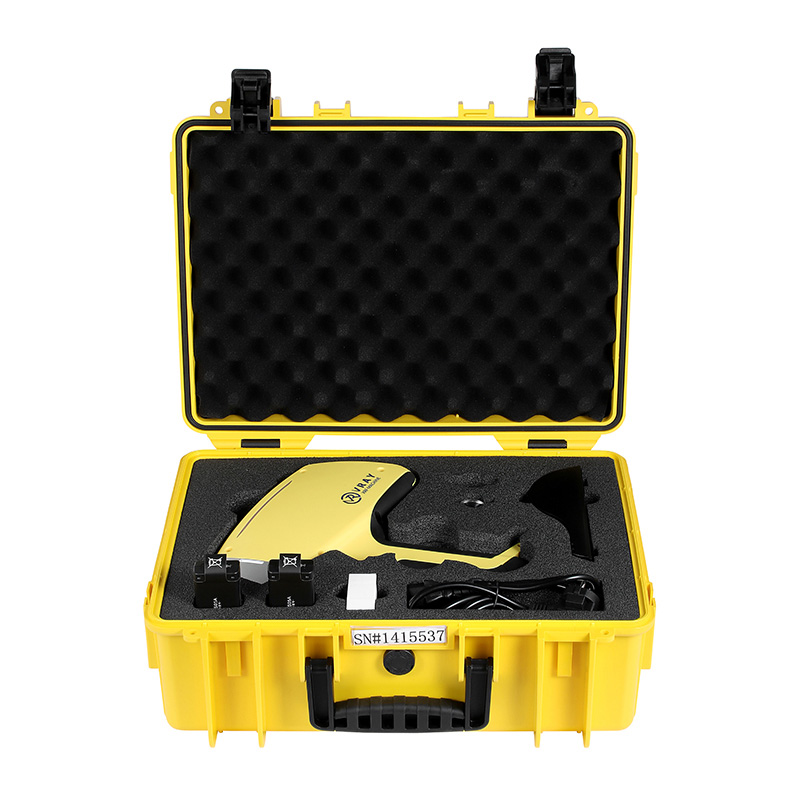

What did our happy clients say?
Our latest acquisition, the VRAY VR-T7 XRF Spectrometer, is phenomenal! Its 0.01% accuracy for 9999 gold and high-sensitivity SDD detector are top-tier. The XY platform with 5MP camera provides unmatched precision for our lab. Highly recommended!
Having just integrated the VRAY VR-H5 XRF Spectrometer, its 1.6Kg weight and 8-hour battery are perfect for field use. The 0.03% accuracy and wide -20℃~50℃ range ensure reliable on-site results. Indispensable for mobile appraisers.
We've just invested in the VRAY VR-M5 XRF Spectrometer, and it's truly versatile. At 4.1Kg with 0.05% accuracy, its 5.7" retractable screen and 5MP camera aid detailed inspections. Excellent for both shop and portable use. Highly satisfied!
My recent acquisition of the VRAY VR-X5 XRF Spectrometer has proven superb. Its 0.05% accuracy and K(19)-U(92) elemental range are excellent. The 40s test time and integrated i5 computer make analysis highly efficient. A powerful tool for any lab.